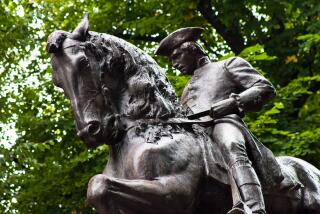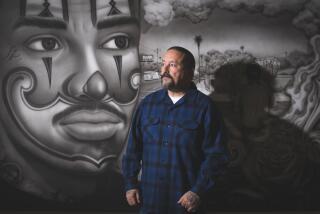A tale of two (prejudicial?) cartoons about Trayvon Martin
- Share via
This week the University of Texas student newspaper let go of its editorial cartoonist after an uproar over a cartoon about the Trayvon Martin shooting -- or, rather, about news coverage of the event and its aftermath.
As my colleague Molly Hennessy-Fiske reported, the offending cartoon “showed a mother sitting in a chair labeled ‘the media’ reading to a child from a book titled, “‘Treyvon [sic] Martin and the Case of Yellow Journalism.’
“The mother says: “And then the big bad ‘white’ man killed the handsome, sweet, innocent ‘colored’ boy.’” . . .
“On Wednesday, as students gathered to protest the cartoon with handmade signs saying, ‘Daily Texan Racist,’ the newspaper’s editorial board published an apology editorial, saying that the cartoonist responsible, Stephanie Eisner, had left the paper.”
I was intrigued by the story for a couple of reasons. Milleniums ago I was the editor of my college newspaper when it published something (a review of a Dick Gregory concert, not a cartoon) that evoked accusations of racism and precipitated a demonstration -- in my dorm room.
Later in life, I served for 17 years as the editorial page editor of the Pittsburgh Post-Gazette, where one of my duties was to scrutinize the work of editorial cartoonists. Toward the end of my tenure, I had the pleasure of working with one of America’s best cartoonists, Rob Rogers, whose work has appeared in The Times.
The furor at UT reminded me of one of Rob’s cartoons attacking the display of the Confederate flag. In the first panel a beer-bellied white man says how much he likes to “look up the flag pole and see a symbol of our Southern heritage hangin’ there.” The second panel showed a pair of legs hanging parallel to a pole, suggesting a lynching. After the cartoon was reprinted in the student newspaper at Oklahoma City University, the editor resigned.
Like Rob with the lynching cartoon, Stephanie Eisner insisted that she had no racist intent. She said she was satirizing the media’s attempt to simplify and sensationalize news stories. I like to think that if I had been her editor, I would have warned her that some readers would assume that she was, if not racist, then at least implying that Trayvon wasn’t sweet and innocent.
By coincidence, Rob Rogers recently did a cartoon about the Trayvon case that I’m glad I didn’t have to vet, because I’m not sure I would have approved it. It showed a “neighborhood watchman” as a Klansman next to -- you guessed it -- a pair of legs (with exposed brown ankles) hanging from a tree.
Was the UT cartoonist prejudging the outcome of the Trayvon Martin investigation? Was Rob? Or is the question unfair to cartoonists, who have a license to exaggerate and simplify? Discuss amongst yourselves.
ALSO:
To catch a profiling police officer
A social media trend we don’t ‘like’
Photo gallery: Ted Rall cartoons
More to Read
A cure for the common opinion
Get thought-provoking perspectives with our weekly newsletter.
You may occasionally receive promotional content from the Los Angeles Times.











